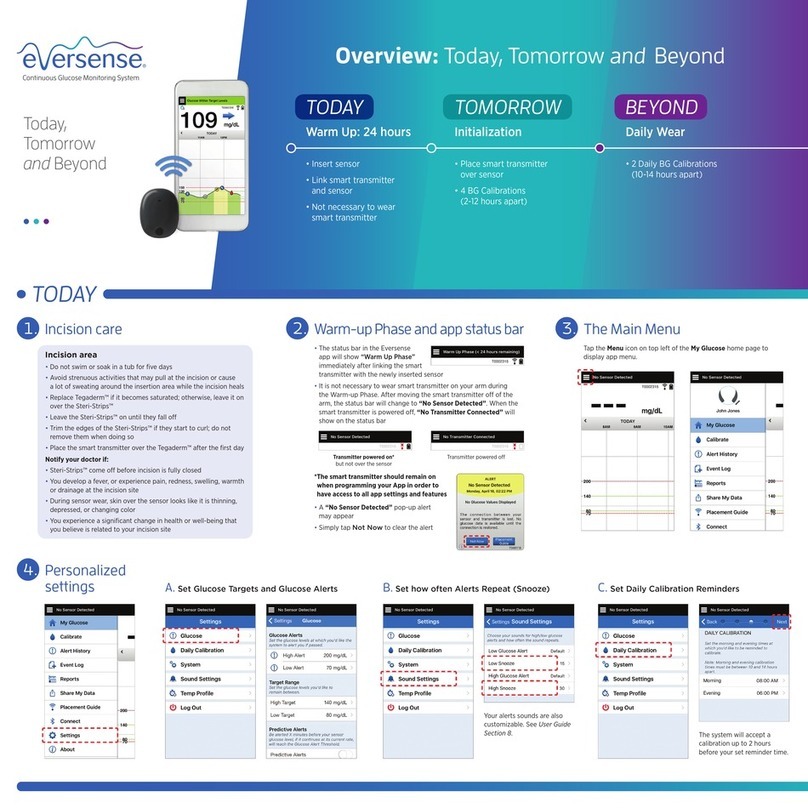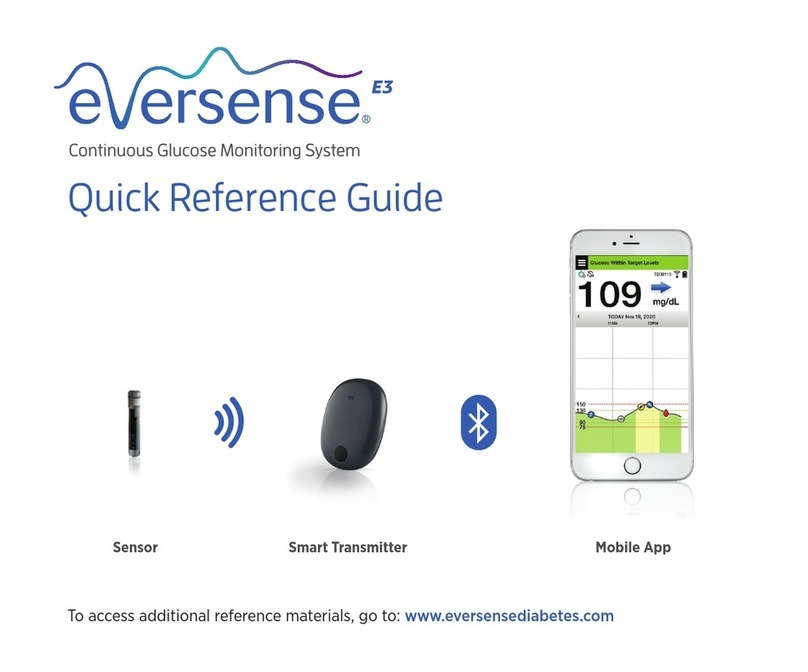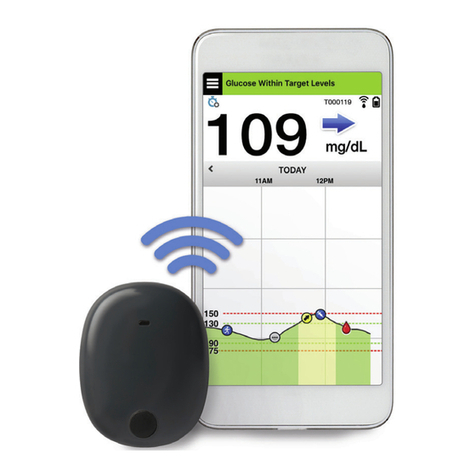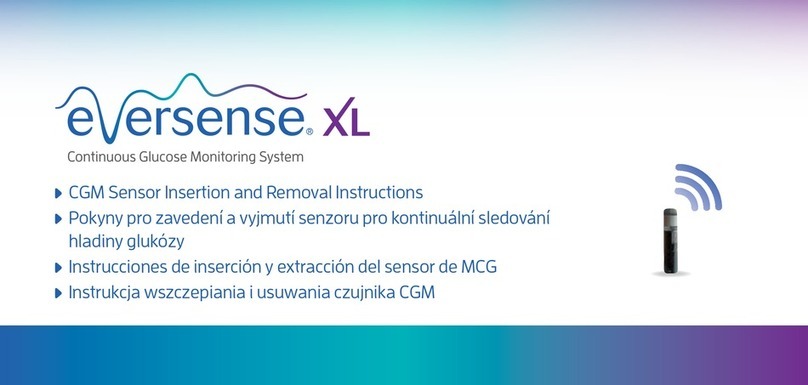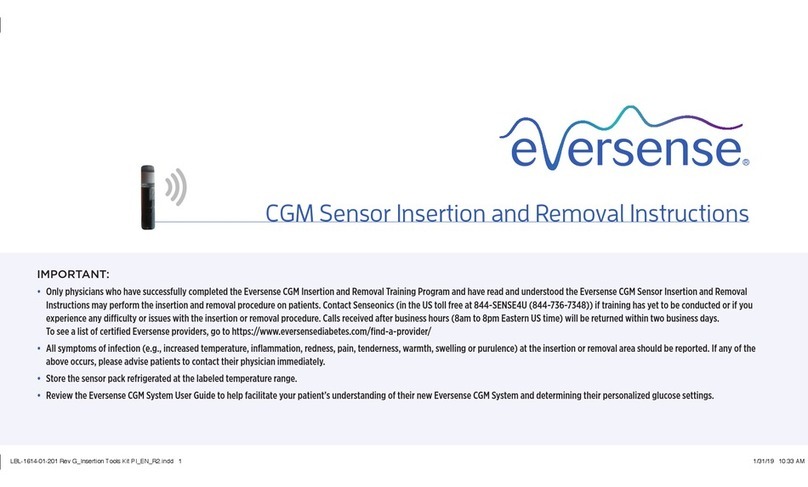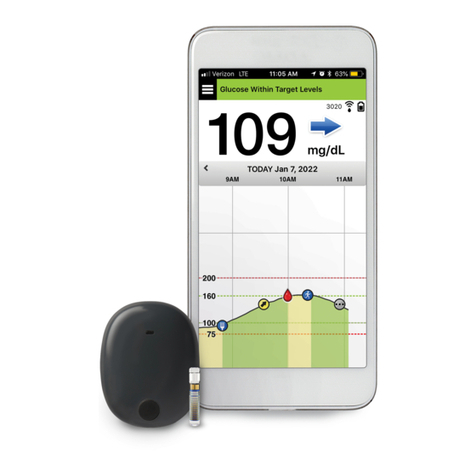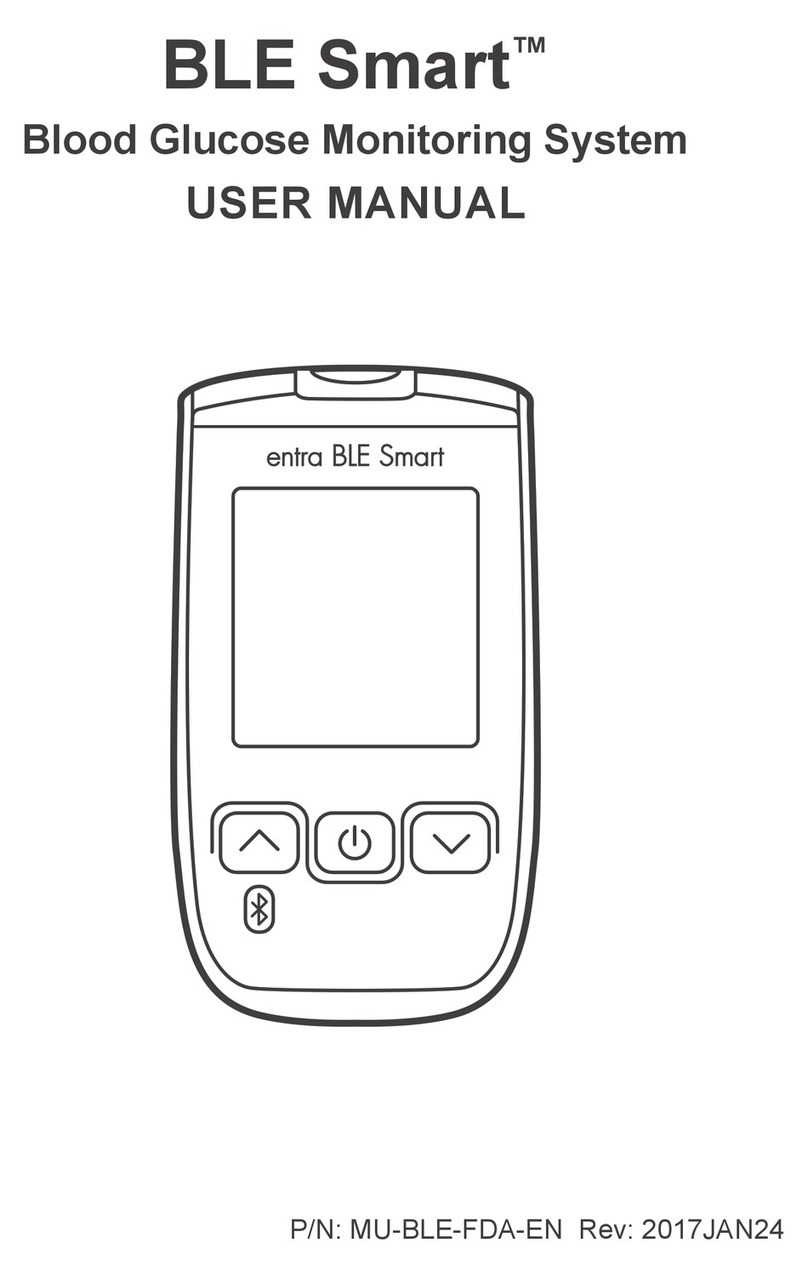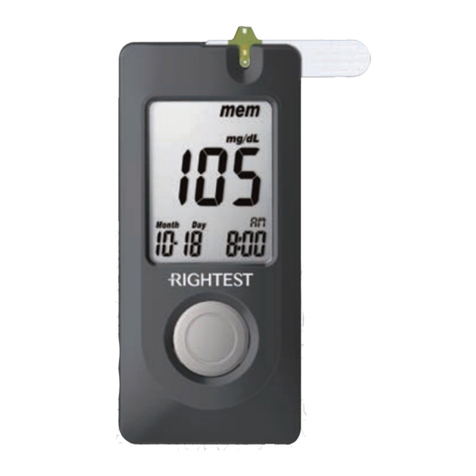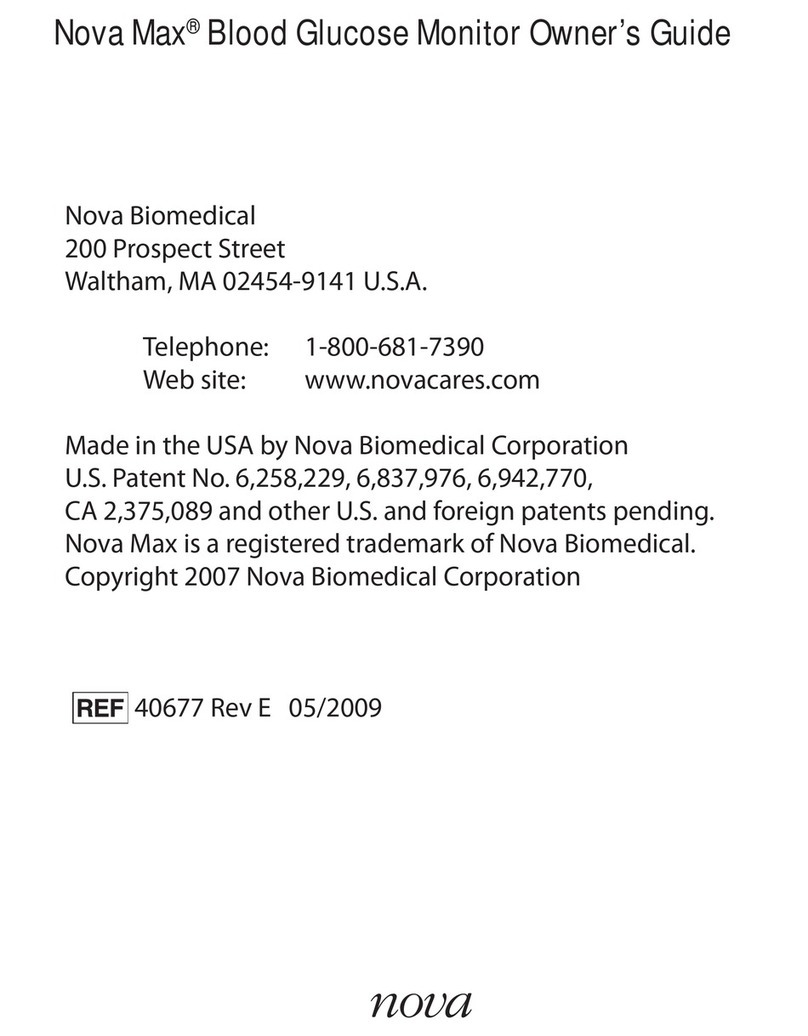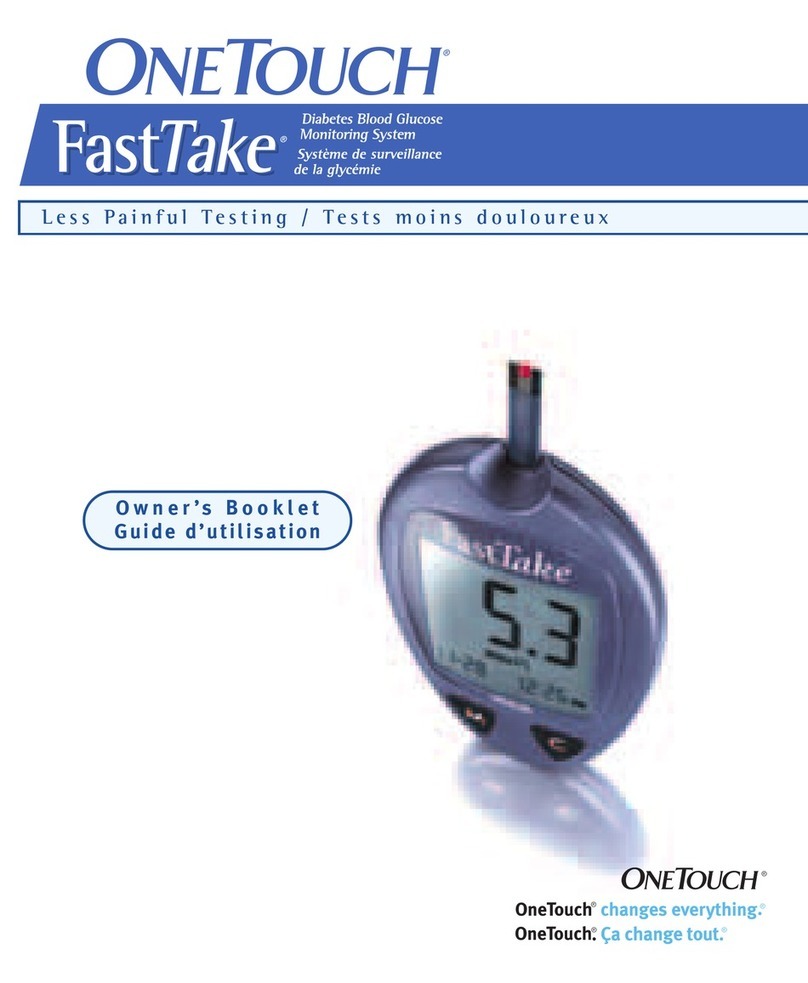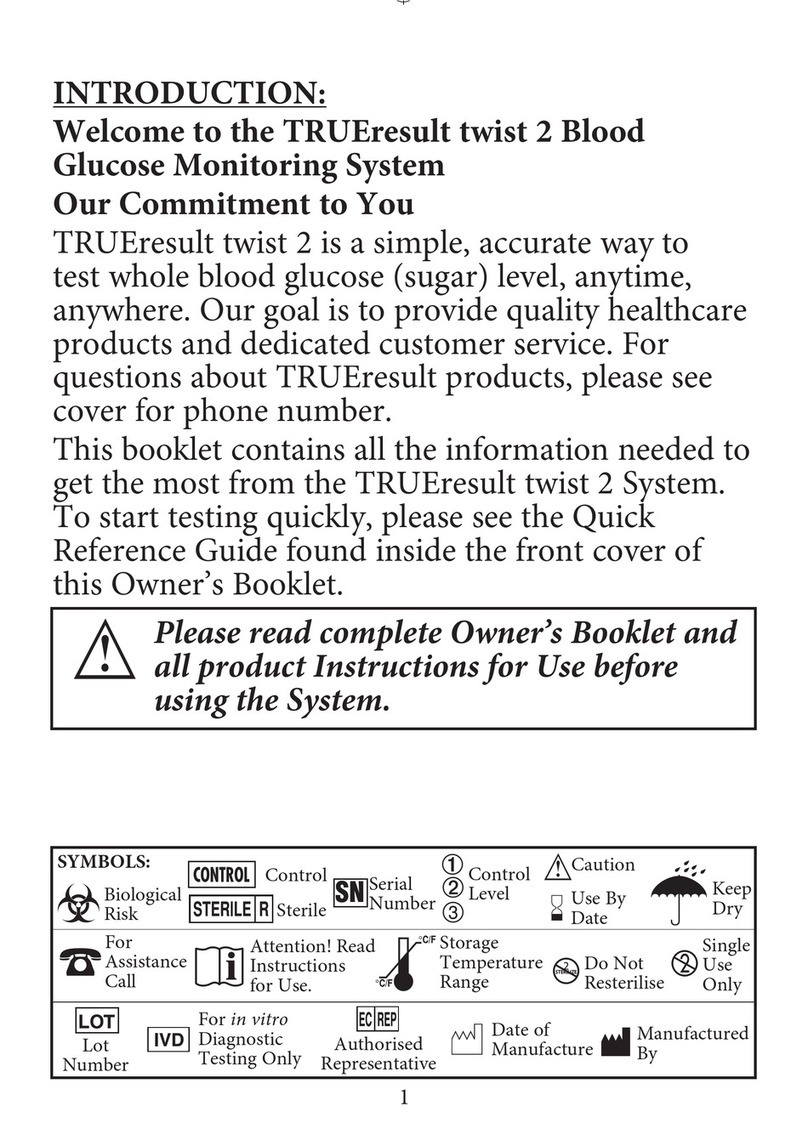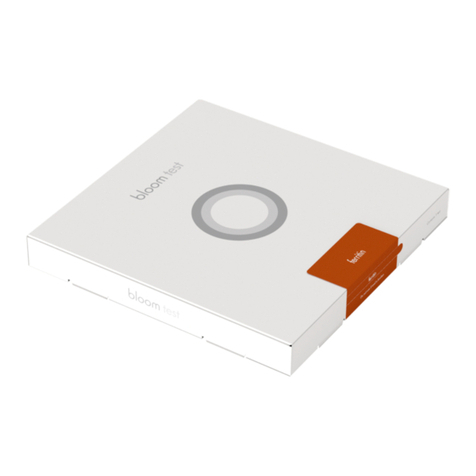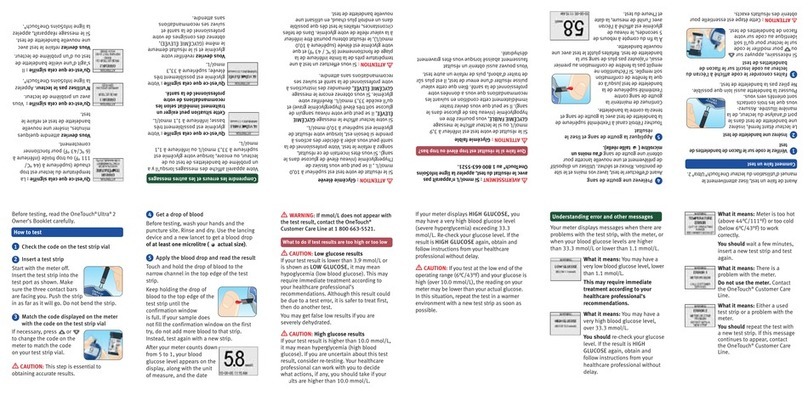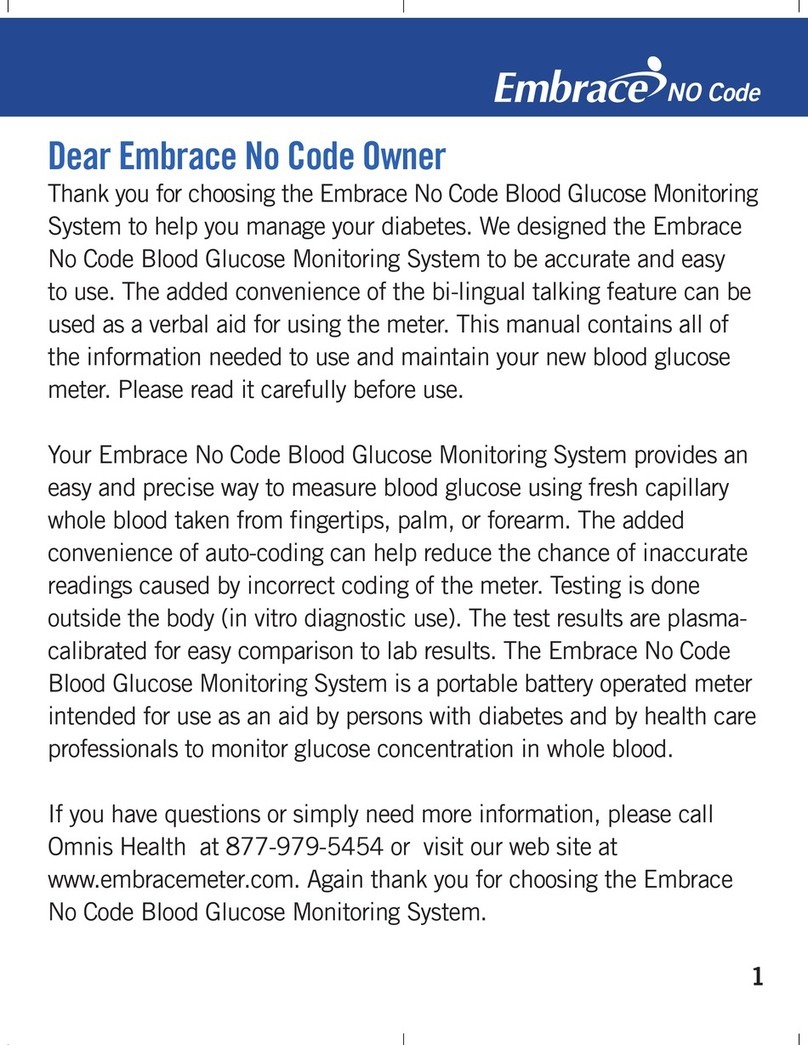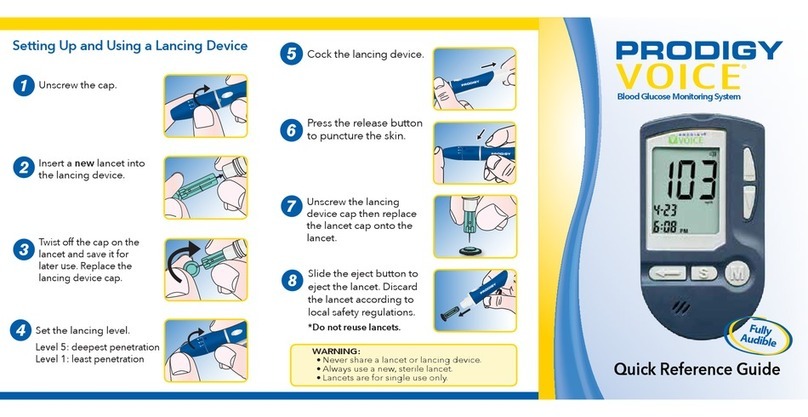eversense E3 User manual

Sensor
User Guide
A guide for using the Eversense E3
Continuous Glucose Monitoring System
Mobile AppSmart Transmitter


Eversense E3 Trademark
Eversense E3, Eversense E3 Continuous Glucose Monitoring, Eversense E3 CGM, Eversense E3 Sensor, Eversense E3
Smart Transmitter, Eversense App and the Eversense E3 logo are trademarks of Senseonics, Incorporated. Other
brands and their products are trademarks or registered trademarks of their respective holders.

Contents
Glossary 5
1. Introduction 7
Help and Support 7
Eversense E3 CGM System Components 8
System Requirements 11
End User Licence Agreement
and Privacy Policy 11
Jailbroken Devices 12
Broken Screen or Button 12
Device Modifications 12
Indications for Use 12
MRI Safety Information 13
Contraindications 14
What is Included in this Package 14
How to Use this User Guide 14
2. Benets and Risks 15
Risks and Side Eects 17
Warnings 18
Cautions 20
3. Getting Started 22
Charge your Smart Transmitter 23
Step 1. Download and Install the App 25
Step 2. Set up the App – Account
Creation, Pairing and Settings 26
Smart Transmitter Connection Icons 33
4. Linking the Sensor 34
5. Daily Transmitter Wear 40
Daily Use 41
Secure the Smart Transmitter over
Inserted Sensor 42
Turn the Smart Transmitter
ON and OFF 45
Smart Transmitter Care
and Maintenance 46
Battery Indicator 46
LED Status Indicators 47
6. Calibrating the System 48
Calibration Phases 50
How To Calibrate 53
7. Using the App 57
Eversense Account Management 58
Check Your Mobile Device Settings 59
Get To Know the “My Glucose” Screen 60
Trend Arrows 63

Understanding Treatment Decisions
with CGM 64
Discuss with Your Healthcare Provider 66
Making Treatment Decisions with
Eversense E3 68
Eversense E3 Trend Arrows and
Treatment Decisions 70
What Would You Do 72
Trend Graph 76
Menu Options 77
8. Customising your Settings 78
Setting Glucose Alert Levels 80
Setting Glucose Target Levels 82
Setting Predictive Alerts 84
Setting Rate of Change Alerts 86
Setting Daily Calibration Reminders 88
Setting System Information 89
Re-linking a Sensor 90
Setting Sounds 92
Low Glucose Override Setting 93
Transmitter Disconnect Setting 99
Setting Temporary Profile 102
9. Alert Descriptions 105
Alert History 107
Alert Descriptions and Actions 109
10. Event Log 135
Glucose 137
Meals 138
Insulin 139
Health 140
Exercise 141
11. Reports 142
Weekly Modal Summary 143
Glucose Pie Chart 144
Glucose Statistics 144
12. Sharing Data 145
Eversense Data Management Software
(DMS) Program 145
Share My Data 145
Sync 146
My Circle 147
Application Sharing 148
13. Product and General
Information on the App 149
Profile Picture 150
Logging out 152
14. Viewing Eversense E3 Data
on the Apple Watch 153
Alerts and Notifications Displayed
on the Apple Watch 156

15. My Circle 176
Remote Monitoring with
Eversense E3 CGM System and
Eversense NOW App 176
16. About the Sensor 182
Insertion Steps 183
Removal Steps 184
17. Travel 185
18. Troubleshooting 186
Smart Transmitter 186
Smart Transmitter Battery
and Charging 188
Connection with Smart Transmitter 189
Calibration 192
Alerts and Notifications 194
Glucose Readings 196
Making Treatment Decisions 197
Trend Arrows 198
App 198
Sensor 200
Events 202
Sync 202
Shortcuts 203
19. Device Performance 204
Clinical Study Performance 204
Eversense E3 Accuracy to YSI
in PROMISE Study 206
Sensor Life 216
Safety 217
20. Technical Specications 218
Sensor 218
Smart Transmitter 219
Power Supply and Charger 220
USB Cable* for Charging and
Downloading 220
Electrical and Safety Standards 221
Symbols on the Eversense CGM
Mobile App 224
Symbols on Packaging and Devices 227
Eversense E3 Smart Transmitter
Limited Warranty 230
Legal Notices 233
Apple Legal Notice 233
Google Legal Notice 233
About Bluetooth® 233
Bluetooth® Trademark 233
FCC Information 234
Radio Equipment Directive 234
Index 235

5
Eversense E3 CGM User Guide
Glossary
Alert An alert warns you that a situation needs your
attention and that you should respond/take appropriate
action.
Blood Glucose Meter A commercially available device
used to measure glucose using a blood sample from a
fingerstick.
Bluetooth® A brand name for a wireless networking
technology that uses short wave radio frequencies (RF)
to connect mobile devices and other wireless electronic
devices.
Calibration Blood glucose reading from a fingerstick
sample entered in the Eversense App to check the
accuracy of the system. With the Eversense E3 System,
there are two phases: Initialisation Phase during which
4 fingerstick tests are required, and the Daily Calibration
Phase, during which a fingerstick test is required once or
twice daily.
CGM Continuous Glucose Monitoring. Continuously
monitoring your glucose levels from interstitial fluid
every few minutes.
Contraindication A condition or circumstance in which
a person should not use the device.
CT Computed Tomography
Do Not Disturb Mode (DND in the Eversense App)
When enabled, the mobile app will stop displaying
non-critical alerts, and the smart transmitter will stop
providing vibratory notifications for non-critical alerts.
Critical alerts will still be provided. Many mobile devices
have a separate Do Not Disturb mode. Consult the
manufacturer’s instructions for more information.
Electromagnetic Interference A strong field of energy
generated by electrical or magnetic devices.
EULA End User Licence Agreement
Eversense App Software program that is installed on
a mobile device and is used to display CGM glucose data
sent from the smart transmitter.
Eversense DMS A web-based application compatible
with the Eversense App where your glucose data is
stored and can be viewed.
Eversense NOW A remote monitoring mobile
application that allows you to share your glucose data
with other people.
FAQ Frequently Asked Questions
Healthcare Provider A qualified healthcare professional
who has successfully completed the Eversense E3 CGM
Insertion and Removal Training Programme and has
read and understood the Eversense E3 CGM Sensor
Insertion and Removal Instructions.

6Eversense E3 CGM User Guide
“HI” Reading Indicates a sensor glucose reading is
> 400 mg/dL.
Hyperglycaemia An episode of high blood glucose.
Hypoglycaemia An episode of low blood glucose.
Interstitial Fluid (ISF) The fluid between cells in the
body. The Eversense E3 CGM measures glucose from
an interstitial fluid sample, versus glucose in a blood
sample obtained from a fingerstick.
Jailbroken Device A device (iPhone or iPod) that
has been modified to remove the controls and limits
set by the original manufacturer.
LED Light Emitting Diode
Linked Sensor A sensor that is connected to a smart
transmitter.
“LO” Reading Indicates sensor glucose reading is
< 40 mg/dL.
Mobile Device A handheld device built on a mobile
operating system that runs the Eversense App and
communicates with the smart transmitter.
mg/dL Milligrams per decilitre, a unit of measure
that shows the concentration of a substance in a
specific amount of fluid. In some countries, including
the United States, glucose test results are reported as
mg/dL, indicating how much glucose is in the blood
when using a blood glucose meter, or how much
glucose is in the interstitial fluid when using some
CGM systems, like the Eversense E3 CGM System.
mmol/L Millimoles per litre, a unit of measure that shows
the concentration of a substance in a specific amount of
fluid. In many countries, glucose test results are reported
as mmol/L, indicating how much glucose is in the blood
when using a blood glucose meter, or how much glucose
is in the interstitial fluid when using some CGM systems,
like the Eversense E3 CGM System.
MRI Magnetic Resonance Imaging
MR Conditional An item with demonstrated safety in
the MR environment within defined conditions including
conditions for the static magnetic field, the time-varying
gradient magnetic fields and the radiofrequency fields.
Rate of Change/Trend Arrows Indicators of direction and
speed of change of your glucose levels.
Remote Monitoring An optional feature that allows you
to invite others to view your CGM data using Eversense
NOW, a separate mobile app they download to a
compatible mobile device.
Sensor A device inserted subcutaneously for continually
measuring interstitial fluid glucose levels.
Snooze Setting Used to set how often an alert repeats.
Subcutaneous Located beneath the skin.
Smart Transmitter A reusable device worn externally
over the inserted sensor that powers the sensor and sends
glucose information to the mobile device for display in the
Eversense App.
Warm-Up Phase The period the sensor requires to adjust
after the sensor has been inserted and before calibrations.

7
Eversense E3 CGM User Guide
1. Introduction
This section reviews how to use this guide and describes your new Eversense E3 CGM System,
including its components and intended purpose.
Help and Support
Please review this User Guide with your healthcare provider. For additional Eversense E3 product questions and
troubleshooting issues, contact Customer Support toll free in the US at 844-SENSE4U (844-736-7348). Outside the
US, call your local distributor or visit https://global.eversensediabetes.com to locate your local distributor. To check for
the most recent version of this User Guide, visit https://global.eversensediabetes.com.
Congratulations on having Eversense E3 CGM technology to assist you in managing your diabetes. Your Eversense E3
CGM System is intended to continually measure glucose levels for up to 180 days after your sensor is inserted. Glucose
information collected by the system is automatically sent to your mobile device. You must contact your healthcare
provider to schedule the insertion and removal of your sensor.
1

8Eversense E3 CGM User Guide
1Eversense E3 CGM System Components
The System includes 1) a small sensor inserted subcutaneously by a healthcare provider, 2) a removable smart
transmitter worn over the sensor, and 3) a mobile app to display the glucose readings.
Eversense E3 Sensor
The sensor is inserted under the skin (upper arm) and measures glucose in
interstitial fluid for up to 180 days. These glucose levels are then calculated by
the smart transmitter and sent to the app.
Eversense E3 Smart Transmitter
The removable smart transmitter is worn externally over the sensor and
powers the sensor. It wirelessly sends glucose data (via Bluetooth) to the
mobile device app. The smart transmitter also provides on-body vibe alerts
based on the glucose settings you choose. It has a rechargeable battery and
is reusable for up to one year.
Sensor
Smart Transmitter
8Eversense E3 CGM User Guide
1

9
Eversense E3 CGM User Guide
Eversense App
The Eversense App is a software application that runs on a mobile device (e.g., smartphone or tablet) and displays
glucose data in a variety of ways. It also provides alerts based on the glucose settings you choose.
IMPORTANT: In order to use the Eversense E3 CGM System, you must have an understanding of downloading
and using mobile apps on your handheld device. Data from the Eversense E3 Smart Transmitter is sent wirelessly via
Bluetooth. Carefully read the instructions in this User Guide for downloading and installing the Eversense Mobile App,
and for pairing your mobile device with the smart transmitter. If there is anything you do not understand in this User
Guide, please contact your local distributor.
Disposable adhesive patches for daily use are also included as part of the system and will be provided to you by your
healthcare provider after your sensor has been inserted. The patch has an acrylic adhesive side that attaches to the
back of the smart transmitter, and a silicone adhesive side that attaches to the skin.
The Eversense App screen layouts will vary based on
your mobile device’s model and/or operating system.
Throughout this User Guide, we have included some
examples of these dierences.
Make sure your mobile device is using the latest
operating system that is listed as compatible on our
website at https://global.eversensediabetes.com/
compatibility.
iOS Android
1

10 Eversense E3 CGM User Guide
1Eversense E3 System Overview
A separate blood glucose monitoring system (not provided by Senseonics) is required for calibrating the CGM System,
and to make treatment decisions under certain conditions. See Understanding Treatment Decisions with CGM.
When used properly, these components work together to help ensure you get continuous glucose monitoring for
up to 180 days.
To ensure you receive continuous glucose readings and other information, follow these daily use tips:
Wear your smart transmitter all the time except when charging.
The smart transmitter is water-resistant to a depth of 1 metre (3.2 feet) for 30 minutes. Exposing the smart
transmitter to conditions beyond this will result in damage and void your warranty.
Make sure your smart transmitter has enough battery power at all times.
Perform two blood glucose meter calibration tests each day when prompted.
Pay attention to alerts and notifications you receive from your smart transmitter and mobile device.
Replace the adhesive patch on your smart transmitter daily.
You can remove the smart transmitter from the upper arm at any time, except during calibration. Remember that
no data is collected when the smart transmitter is not communicating with the sensor. When you place the smart
transmitter back on the sensor site, it will take up to 10 minutes for sensor communication to re-start and for
glucose readings to appear in the app.
When the smart transmitter and mobile device are not within range of each other, any data gathered by the smart
transmitter is stored and sent to the app when the mobile device and smart transmitter are back within range.
It is safe for you to wear your sensor and smart transmitter when you go through metal detectors at airports?
While flying, the smart transmitter performs similarly to any other Bluetooth device. Be sure to follow the specific
safety guidelines mandated by the airline.
11

1
11
Eversense E3 CGM User Guide
Some of the features of the Eversense E3 CGM System:
•Wireless communication with the sensor, smart transmitter and app.
•Long-term sensor wear in the upper arm for up to 180 days.
•Alerts when pre-set Low or High Glucose Alert levels (hypoglycaemia or hyperglycaemia) are reached.
•Predictive Alerts let you know before reaching pre-set Low or High Glucose Alert levels.
•Use of mobile device (e.g., smartphone) to display glucose readings.
•On-body vibe alerts with the smart transmitter even when mobile device is not nearby.
•Provides readings within 40-400 mg/dL range every 5 minutes.
•Trend arrows that show whether your glucose values are rising or falling and how fast.
•Graphs and statistics that show your glucose results in easy-to-understand formats.
•Removable and rechargeable smart transmitter.
•Event entry capabilities (like meals, exercise and insulin).
•Stores glucose data in the app and on the smart transmitter.
•Provides remote monitoring capability to others using the Eversense NOW Mobile App.
System Requirements
•The Eversense E3 CGM System.
•A compatible smartphone for Android or Apple iPhone® or iPod® or iPad® that has Bluetooth Smart (or Bluetooth
Low Energy). The Eversense App also works with the Apple Watch®.
•For a list of compatible devices and operating systems, please go to https://global.eversensediabetes.com/compatibility.
•The Eversense App downloaded to your mobile device from the Apple App Store or on Google Play™.
End User Licence Agreement and Privacy Policy
Use of the Eversense App is subject to the terms and conditions of the most current Eversense End User Licence
Agreement and Eversense Privacy Policy. These documents are updated from time to time and are posted at
https://global.eversensediabetes.com.

12 Eversense E3 CGM User Guide
1Jailbroken Devices
DO NOT use the Eversense Apps on jailbroken iPhones or iPods. Jailbroken devices do not provide an acceptable level
of security for the user and are not approved for use by Senseonics.
Broken Screen or Button
If the screen of your mobile device is broken, or the buttons do not work, then you may not be able to use your
Eversense E3 System and you may miss low or high glucose events.
Device Modifications
DO NOT modify the Eversense E3 CGM System for use with products, accessories, or peripheral equipment not
furnished or approved in writing by Senseonics. Unauthorised modifications void your transmitter warranty and
may impact system performance.
Indications for Use
The Eversense E3 CGM System is indicated for continually measuring glucose levels in adults (18 years or older) with
diabetes for up to 180 days. The system is indicated for use to replace fingerstick blood glucose measurements for
diabetes treatment decisions.
The system is intended to:
•Provide real-time glucose readings.
•Provide glucose trend information.
•Provide alerts for the detection and prediction of episodes of low blood glucose (hypoglycaemia) and high blood
glucose (hyperglycaemia).
•Aid in the management of diabetes.
Historical data from the system can be interpreted to aid in providing therapy adjustments. These adjustments should
be based on patterns and trends seen over time. The system is intended for single patient use.
1

1
13
Eversense E3 CGM User Guide
MRI Safety Information
A patient with this device can be safely scanned in a horizontal, closed bore MR scanner meeting the following
conditions:
•Static magnetic field of 1.5 T or 3.0 T.
•Maximum spatial field gradient of 1900 gauss/cm (≤19 T/m).
•Maximum MR system reported, whole body averaged specific absorption rate (SAR) of 4 W/kg (First Level
Controlled Operating Mode) for 15 minutes of continuous scanning, or SAR of 2 W/kg for 30 minutes of continuous
scanning.
Under the scan conditions defined above, non-clinical testing results indicate the Eversense E3 Sensor is expected to
produce a maximum temperature rise of less than 5.4°C.
In non-clinical testing, the image artifact caused by the device extends approximately 72 mm (2.83 inches) from the
Eversense E3 Sensor when imaged with a gradient echo pulse sequence and a 3 T MR system.
The Eversense E3 Sensor has not been tested in MR systems that do not meet the conditions above. Exposing the
Eversense E3 Sensor to MRI conditions which are outside of the conditions outlined above can cause potential
complications such as device migration, heating and tissue damage or erosion through the skin.
The Eversense E3 Smart Transmitter is MR Unsafe and MUST BE REMOVED before undergoing an MRI procedure.
Before you undergo an MRI procedure, tell the MRI sta that you have an Eversense E3 Sensor and Smart
Transmitter, and consult with the healthcare provider who inserted your sensor.
For the most updated version of the Eversense E3 CGM System labelling, visit https://global.eversensediabetes.com.
You will receive an International Implant Card from your healthcare provider with each sensor insertion. Keep this card
in your wallet as a reference.

1
14 Eversense E3 CGM User Guide
1Contraindications
The system is contraindicated in people for whom dexamethasone or dexamethasone acetate may be contraindicated.
The smart transmitter is incompatible with magnetic resonance imaging (MRI) procedures. Patients should not undergo
an MRI procedure when wearing the smart transmitter. For information on the sensor, please see MRI Safety Information.
Mannitol or sorbitol, when administered intravenously, or as a component of an irrigation solution or peritoneal dialysis
solution, may increase blood mannitol or sorbitol concentrations and cause falsely elevated readings of your sensor
glucose results. Sorbitol is used in some artificial sweeteners, and concentration levels from typical dietary intake do
not impact sensor glucose results.
Also included in this package is this User Guide, Quick Reference Guide, Eversense DMS User Guide, Eversense NOW
User Guide, and an Eversense Next Steps sheet (not shown).
Power Supply
(Your Smart Transmitter kit will include a wall
plug appropriate for use in your local region.)
Charging CradleEversense E3 Smart Transmitter
What is Included in this Package
This Eversense E3 Smart Transmitter Kit contains the following:
How to Use this User Guide
This guide describes how to use your CGM System. Read the entire guide before using the system.
•Any warnings or cautions are highlighted in a box.
•User tips are preceded by the symbol.

15
Eversense E3 CGM User Guide
2
2. Benets and Risks
This section describes the benets, expectations and risks associated with using the Eversense
E3 CGM System. Additional safety information is available at https://ec.europa.eu/tools/eudamed
(European database on medical devices - EUDAMED) in the Eversense E3 CGM System Summary
of Safety and Performance (SSCP), or upon request to Customer Support. The SSCP is linked to the
Eversense E3 CGM system component Basic UDI-DI numbers that are listed on the back cover of
this Instruction Manual.
Continuous glucose monitoring aids in the management of diabetes and glucose control, which can improve your
quality of life. Best results are achieved when you are fully informed about the risks and benefits, insertion procedure,
follow-up requirements, and self-care responsibilities. You should not have the sensor inserted if you cannot properly
operate the CGM System.
The CGM System measures glucose in interstitial fluid (ISF) between the body’s cells. Physiologic dierences between
ISF and blood from a fingerstick may result in dierences in glucose measurements. These dierences are especially
evident during times of rapid change in blood glucose (e.g., after eating, dosing insulin, or exercising), and for some
people, during the first several days after insertion due to inflammation that may result from the insertion procedure.
Glucose levels in ISF lag behind glucose levels in blood by several minutes.
IMPORTANT: If your symptoms do not match the glucose alerts and readings from the Eversense E3 CGM
System, a fingerstick blood glucose check with a home blood glucose meter should be performed prior to making
treatment decisions.
Failure to use the Eversense E3 CGM System in accordance with the instructions for use may result in you missing
a hypoglycaemic or hyperglycaemic glucose event, which may result in injury.

2
16 Eversense E3 CGM User Guide
The sensor has a silicone ring that contains a small amount of an anti-inflammatory drug (dexamethasone acetate).
It has not been determined whether the risks associated with injectable dexamethasone acetate apply to the
dexamethasone acetate elution ring inside the sensor. The elution ring releases a small amount of dexamethasone
acetate when the sensor comes in contact with body fluids and serves to minimise the body’s inflammatory response
to the inserted sensor. Dexamethasone acetate in the ring may also cause other adverse events not previously seen
with the injectable form. For a listing of potentially adverse eects related to dexamethasone acetate, contact your
healthcare provider.
Unauthorised modifications of the equipment, improperly accessing information within it or “jailbreaking” your
system, and taking any other unauthorised actions may cause the CGM system to malfunction and may put you
at risk. Unauthorised modification of the equipment is not permitted and voids your warranty.
Any serious incident that has occurred relating to use of the device should be reported to the manufacturer and
the competent authority of your Member State.
16 Eversense E3 CGM User Guide
2

2
Risks and Side Eects
The glucose alerts and notifications will not audibly notify you when the sound on the mobile device is turned o.
If the system cannot display a glucose value, it also cannot provide glucose alerts. If you are unable to feel the
vibration of the smart transmitter you may not notice the alerts. You may need medical attention in the event that
you have high or low glucose and are unaware of it. The system’s calculated glucose can be slightly dierent from
your blood glucose meter. This may cause an alert to activate at a dierent time than it would have if the system’s
values always matched the blood glucose meter values.
IMPORTANT: If you do not test your glucose with a blood glucose meter when your symptoms are not
consistent with the sensor glucose readings, you may miss a high or low glucose event.
Treatment decisions should be made based on a review of the following: a sensor glucose value, trend arrow, recent
glucose trend graph, and system alerts/notifications. You should not make a treatment decision unless you have
considered all this information. Be sure you talk with your healthcare provider about insulin action, so you understand
how its impact on your glucose may factor into your treatment decisions.
The sensor is inserted by making a small incision and placing it under the skin. The implantation may cause infection,
pain, skin irritation, bruising, skin discolouration or atrophy. Dizziness, fainting and nausea were reported in small
numbers during clinical studies, as were instances of the sensor breaking or not being removed on first attempt.
Additionally, the adhesive may cause a reaction or skin irritation. Any medical issue related to the procedure or use
of the device should be reported to your healthcare provider. The sensor will require an additional removal procedure
at the end of sensor life.
17
Eversense E3 CGM User Guide

2
18 Eversense E3 CGM User Guide
Warnings
•The Eversense E3 CGM System has not been tested using insertion sites other than the upper arm.
•If at any time your symptoms are not consistent with the sensor glucose readings, you should test your
glucose with a blood glucose meter.
•Before making a treatment decision, you should take into account the sensor glucose value, the trend graph,
the trend arrow and any alerts from the Eversense E3 CGM System. If no trend arrow is displayed, the system
does not have enough data to display direction and rate of change. You should not make a treatment decision
based solely on the sensor glucose value.
•If your smart transmitter is damaged or cracked, DO NOT use, as this could create an electrical safety hazard
or malfunction, and could result in electrical shock.
•Close contact with direct EMI may interfere with the smart transmitter’s ability to send data to your mobile
device. Move away from the source of EMI and check that your mobile device is connected to your smart
transmitter.
•Antibiotics of the tetracycline class may falsely lower sensor glucose readings. You should not rely on sensor
glucose readings while taking tetracyclines.
•The bandage should remain covering the incision for 48 hours as this is a standard of care to allow formation
of a water-tight seal to help protect against infection. Until it has healed, always cover the insertion site with
a sterile bandage before placing the smart transmitter adhesive over the sensor. Failure to do so could result
in infection at the insertion site.
•Please review this User Guide with your healthcare provider. For additional Eversense E3 product questions
and troubleshooting issues, contact Customer Support toll free in the US at 844-SENSE4U (844-736-7348).
Outside the US, call your local distributor or visit https://global.eversensediabetes.com to locate your local
distributor.
•Always calibrate the system using only a fingerstick blood sample. DO NOT use an alternative site (such as
forearm or palm) blood glucose reading to calibrate the system.
18 Eversense E3 CGM User Guide
2
Other manuals for E3
1
Table of contents
Other eversense Blood Glucose Meter manuals
Popular Blood Glucose Meter manuals by other brands

BIONIME
BIONIME Rightest GM210 user manual
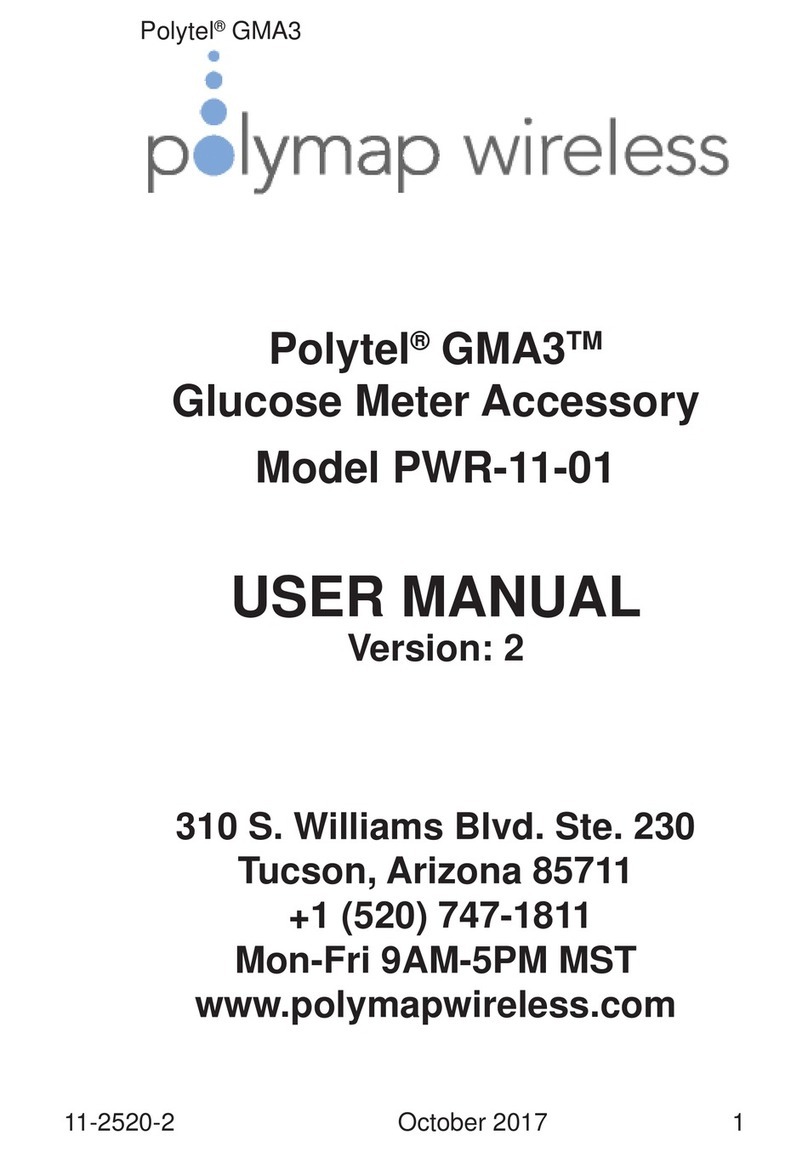
Polymap Wireless
Polymap Wireless Polytel GMA3 user manual
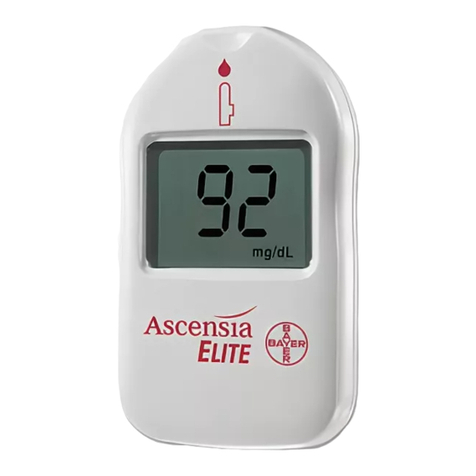
Bayer HealthCare
Bayer HealthCare Ascensia Elite Blood Glucose Meter MODEL Ascensia... user guide

Beurer medical
Beurer medical GL 44 Instructions for use
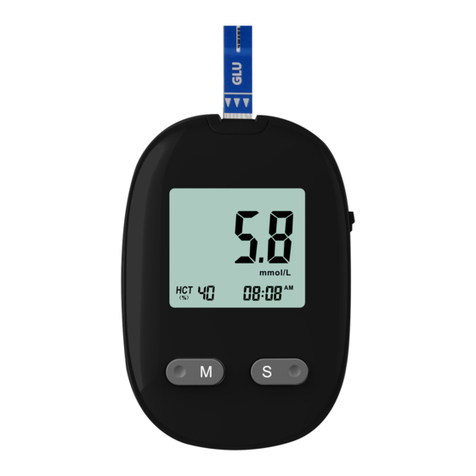
Sejoy
Sejoy BG-707 owner's booklet
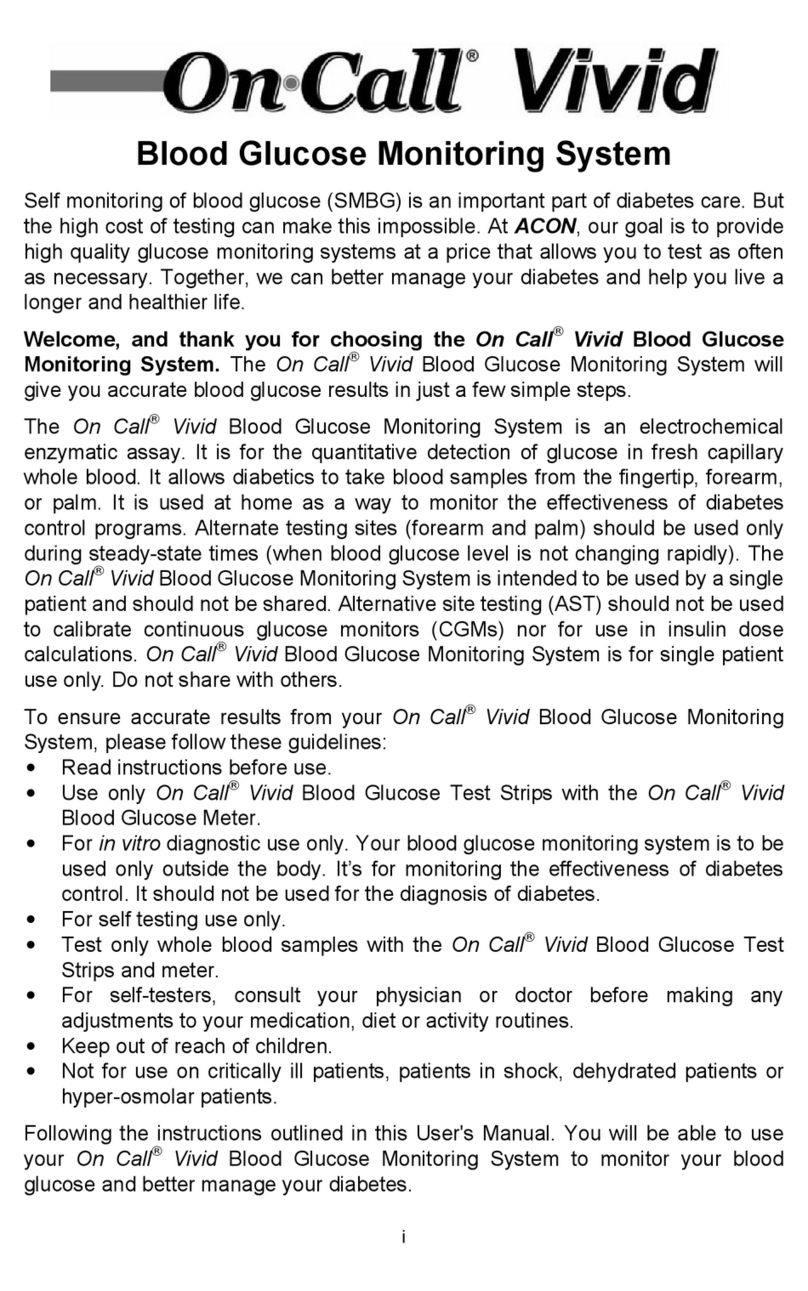
ACONLABS
ACONLABS On Call Vivid user manual
